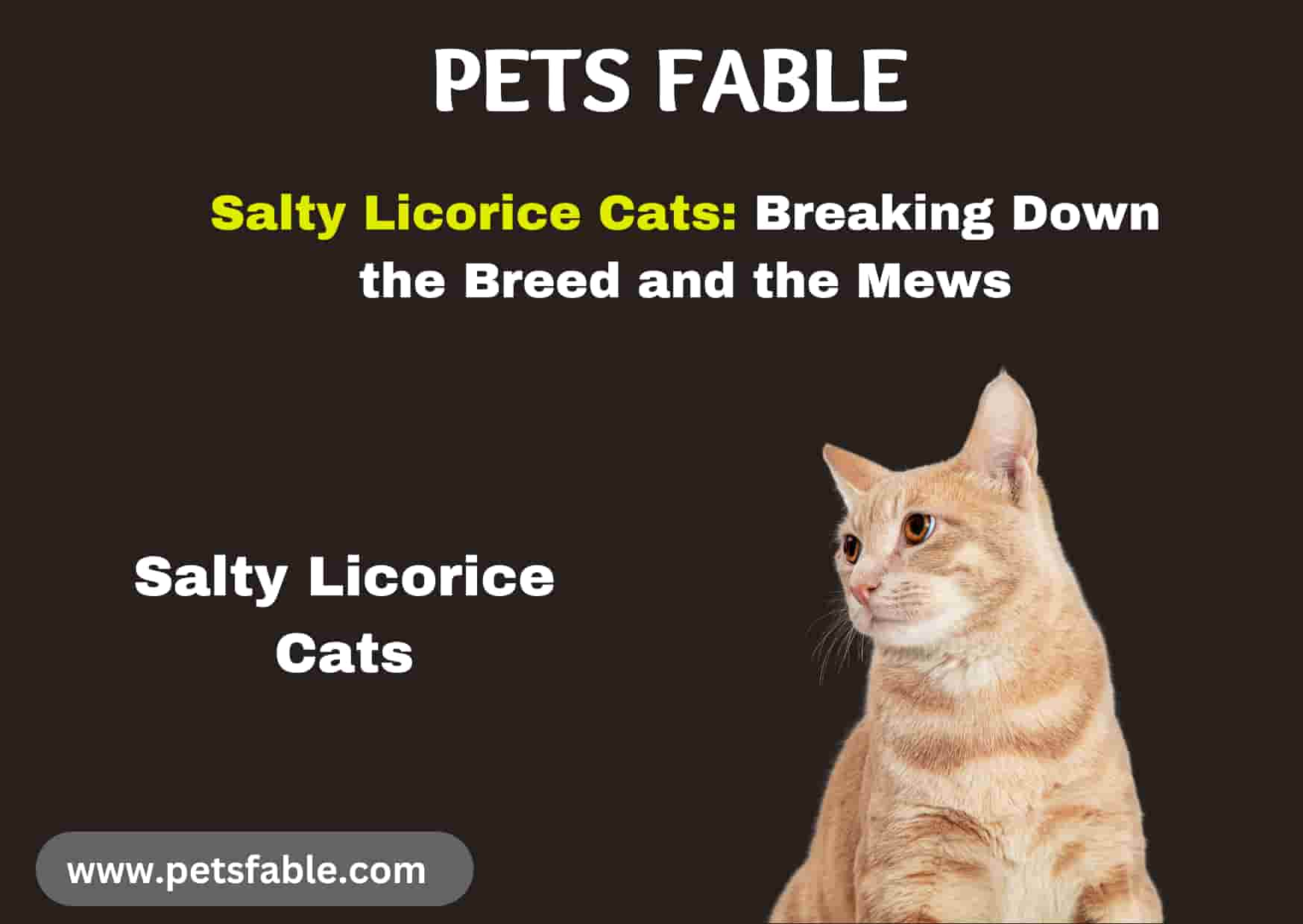Understanding Salty Licorice Cats: Breed vs. Candy
Salty Licorice Cats are two distinct entities: one a rare cat breed and the other a unique candy treat.
The cat breed is characterized by its distinctive grey coat and robust health, making it a prized companion among feline lovers.
On the other hand, the candy known as Salty Licorice Cats blends the bold flavors of salt and black licorice into shapes reminiscent of playful cats, providing a delightful visual and flavorful experience.
These two forms of Salty Licorice Cats, though entirely different, each hold significance in their respective domains: one in the world of pet breeding and the other in the culinary arts.
Whether you’re exploring companionship with the animal or indulging in the whimsical confection, both versions of Salty Licorice Cats offer a unique aspect of enjoyment.

Exploring Salty Licorice Cats: A Unique Breed and Candy
Salty Licorice Cats capture attention in two distinct ways: as a unique breed of felines and as a whimsical candy. In the serene setting of Petäjävesi, Finland, these cats are more formally known as “salmiak cats.
They intrigue both geneticists and cat lovers with their striking fur patterns, featuring black fur with flecks of white and an ombré transition to solid white on their lower body.
Simultaneously, in the world of sweets, Salty Licorice Cats are a delightful treat, combining the bold flavors of salt and black licorice into cat-shaped confections. This playful candy is both a visual and gustatory delight, enjoyed by those with a penchant for unique flavors.
Both the cat breed and the candy share a name but cater to vastly different enthusiasts—one group dedicated to the study and appreciation of a rare feline breed, and the other to the enjoyment of a distinct and flavorful snack.
Unveiling the Genetics of Salty Licorice Cats
Researchers at the University of Helsinki have made a groundbreaking discovery in the genetics of the so-called Salty Licorice Cats. Their research, documented in the journal Animal Genetics, has identified a novel mutation in the KIT gene.
Read more: Unveiling the Genetics of Salty Licorice Cats
This gene is known to influence several important biological aspects, including fur color, and is crucial for the proper functioning of red blood cells and reproductive cells.
This finding is particularly significant as it provides deeper insights into the unique coloration of these cats and their overall health. The discovery not only adds to our understanding of genetic variations in animals but also enriches the broader field of genetics.
Understanding the Risks of Licorice to Cat Health
While the unique genetics of Salty Licorice Cats may captivate enthusiasts and researchers, cat owners should be vigilant about the risks posed by certain human foods to their pets. Specifically, licorice can be harmful to cats due to its content of glycyrrhizin.
This compound can alter a cat’s normal balance of potassium and sodium, potentially causing severe heart issues and other health problems. Ingesting licorice can lead to increased blood pressure and significant cardiac complications in cats.
Read more: Understanding the Risks of Licorice to Cat Health
This highlights the importance of keeping such snacks out of reach from our feline companions to ensure their safety and well-being.
Key Foods to Avoid for Cat Safety
It’s crucial for pet owners to recognize which snacks are harmful to their felines. Candies like Twizzlers, which are loaded with sugar and artificial ingredients, can lead to significant health issues in cats, including diabetes and liver problems.
To safeguard their health, these treats should be kept securely away from pets to prevent any accidental consumption. This preventive measure helps ensure the wellbeing of your feline companions by avoiding the risks associated with inappropriate human foods.
Future Prospects for Salmiak Cats: Breeding and Beyond
As advancements in genetic research shed more light on the distinctive traits of Salmiak Cats, there is growing interest in potentially developing these cats into a designer breed.
This progression, however, must carefully consider the health and well-being of the cats to ensure that breeding practices do not compromise their overall health while aiming to preserve the unique Salmiak characteristic.

Celebrating the Unique Appeal of Salty Licorice Cats
Salty Licorice Cats offer two kinds of enjoyment: as a breed, they provide companionship and a visually unique beauty; as a candy, they deliver an unexpected taste experience that deviates from typical flavors.
Also read: dogs-eat-popcorn-surprising-facts-you-need-to-know
This dual appeal underscores the fascinating variety present in both the natural and culinary worlds, enhancing the experiences of those who cherish them.
FAQ’s:
What exactly are salty licorice cats?
Salty licorice cats, also known as salmiak cats, are distinguished by their unique fur pattern. They feature a black base with white flecks that gradually transition to white on their lower body, creating a tuxedo-like appearance.
This coloring is attributed to a specific gene mutation exclusive to these cats.
Why is licorice harmful to cats?
Licorice contains glycyrrhizin, a compound that disrupts the balance of sodium and potassium in cats. This imbalance can lead to serious health issues, including increased blood pressure and heart problems.
Can cats eat any candy?
It is advisable not to feed any candy to cats, particularly those high in sugar, xylitol, or artificial ingredients. These substances can cause severe health problems, such as diabetes and liver disease.
Could the salty licorice cats become a new designer breed?
There is potential for salty licorice cats to become a designer breed due to their distinctive appearance. However, breeders must prioritize the genetic health and overall well-being of the cats in any breeding program.
